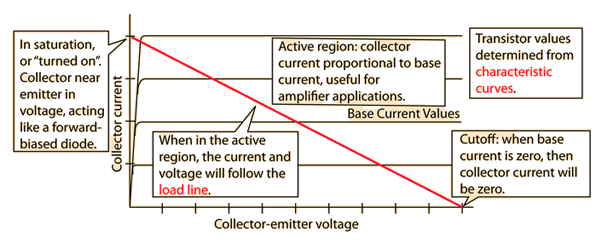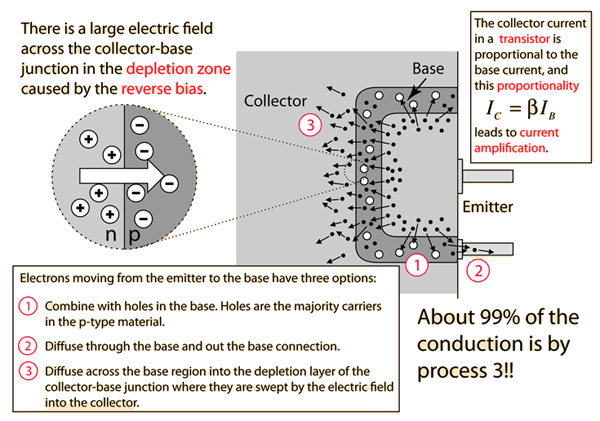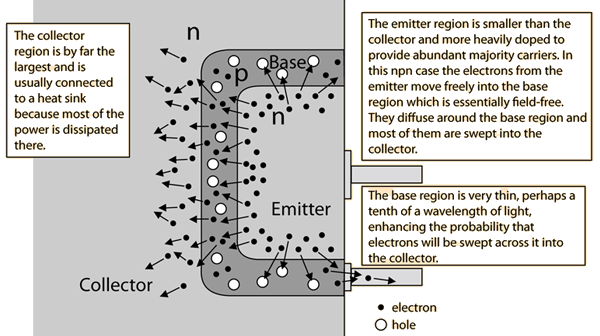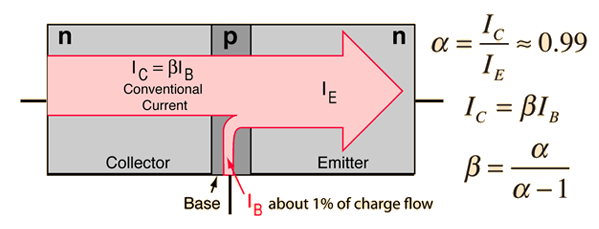Transistor Operation
A transistor in a circuit will be in one of three conditions- Cut off (no collector current), useful for switch operation.
- In the active region (some collector current, more than a few tenths of a volt above the emitter), useful for amplifier applications
- In saturation (collector a few tenths of a volt above emitter), large current useful for "switch on" applications.

| Transistor load line | Characteristic curves |
Semiconductor concepts
Semiconductors for electronics
| HyperPhysics***** Condensed Matter | R Nave |




